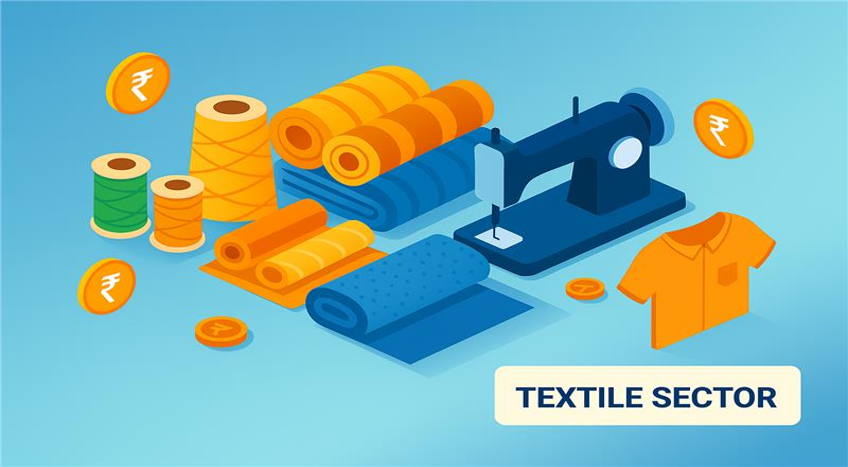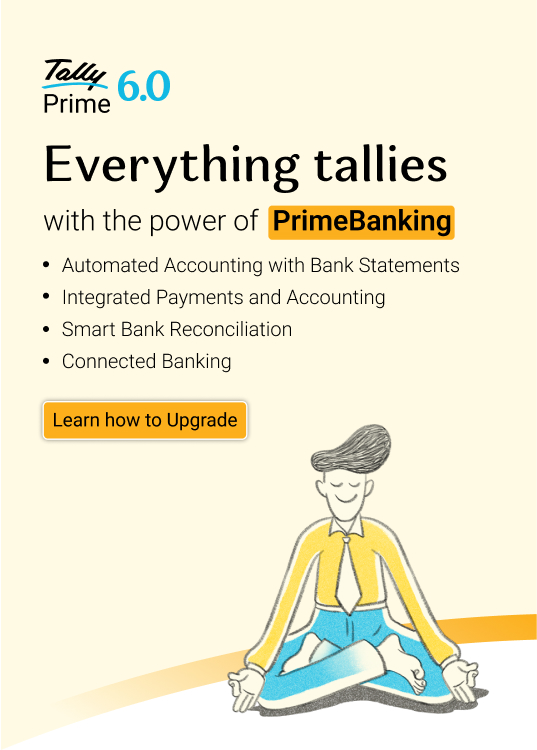Let’s say at the end of the year your distributor hits the sales target you set, and you want to reward them with a year-end discount. The problem? You’ve already issued all the invoices. How do you manage GST and paperwork for this discount without drowning in compliance?
Until now, GST rules required a formal pre-agreement and linking the discount to every single invoice. So, if you promised a 2% annual rebate and had raised 30 invoices, you had to split and adjust the discount across all 30—a manual, messy, and time-consuming task.
The good news: GST authorities have simplified this. No more advance agreements or invoice-level linkage. A simple credit note is enough, with the buyer reversing proportionate ITC. This clarification makes offering post-sale discounts far easier, without the compliance headaches.
A guide to post-sale GST discounts
Post-sale discounts have long been a grey area, creating confusion for businesses on tax liability and Input Tax Credit (ITC). With CBIC Circular No. 251/08/2025, there’s now clear guidance to simplify these transactions and ensure uniform GST treatment.
The circular recognizes that many discounts—like volume or performance-based incentives—aren’t formalized upfront. By removing rigid documentation requirements, it reduces compliance burden and gives businesses more flexibility in pricing and sales strategies.
For business owners, understanding these clarifications is key to staying compliant and avoiding disputes. This guide breaks down the circular into simple steps, covering when ITC can be retained, how to handle manufacturer-to-dealer discounts, and what to do with promotional schemes.
Step 1: Understand the two types of credit notes
Before diving into specific scenarios, it's crucial to distinguish between the two kinds of credit notes you can issue. The type you use determines the GST implications for both you and your customer.
GST credit notes
A GST credit note is issued under Section 34 of the CGST Act. You use it when you need to formally reduce the taxable value or the GST charged on an original invoice. This typically happens with sales returns or when a price correction is needed. When you issue a GST credit note, you reduce your output tax liability, and your customer must reverse a corresponding amount of their Input Tax Credit (ITC).
Financial (commercial) credit notes
A financial or commercial credit note is a simpler document. It's used to give a discount or reduce the value of a supply without adjusting the original GST charged. Since the tax amount remains unchanged, there is no impact on your GST liability, and your customer does not need to reverse any ITC.
Step 2: Determine ITC availability for discounts
One of the biggest questions has been whether a customer must reverse their ITC when they receive a post-sale discount. The new circular provides a clear answer.
The rule: If a supplier issues a post-sale discount using a financial/commercial credit note (which does not alter the GST on the original invoice), the recipient is entitled to keep the full ITC they initially claimed.
Actionable step: When you receive a post-sale discount from a supplier, check the credit note. If it's a commercial credit note that doesn't mention a GST reduction, you do not need to reverse any ITC. Your original ITC claim remains valid.
Example:
Your business, "ABC Retail," buys goods worth ₹50,000 + 18% GST (₹9,000) from "XYZ Wholesale." You claim the full ITC of ₹9,000. Later, XYZ Wholesale offers you a year-end volume discount and issues a commercial credit note for ₹5,000. Since this note does not adjust the original GST, you retain the full ₹9,000 ITC.
Step 3: Assess tax on discounts from manufacturers
Manufacturers often provide discounts to their dealers or distributors after the initial sale. The tax treatment of these discounts depends on the nature of the transaction and whether the discount is simply a price reduction or payment for a service.
Scenario A: Pure price reduction (principal-to-principal)
If a manufacturer provides a discount to a dealer and there is no obligation for the dealer to perform any specific action in return, the discount is treated as a simple price reduction.
The rule: When the discount is purely commercial and not linked to any separate service provided by the dealer, it is not considered a taxable supply. No GST is payable on the discount amount.
Actionable step: If you are a dealer receiving a volume or target-based discount from a manufacturer, and you haven't been asked to perform a specific service in return, you do not need to treat the discount as income for a service. It's simply a reduction in your purchase price.
Example:
"PQR Auto Parts" (manufacturer) offers "LMN Motors" (dealer) a post-sale discount of ₹1,00,000 for meeting annual purchase targets. This discount is given via a commercial credit note. LMN Motors did not have to run any special promotions for PQR. In this case, the ₹1,00,000 is a price reduction, not a payment for a service, and no GST applies to it.
Scenario B: Discount as reimbursement
Sometimes, a manufacturer may require a dealer to sell products to an end customer at a reduced price, promising to reimburse the dealer for the difference.
The rule: If the manufacturer’s discount is essentially a reimbursement to the dealer for offering a lower price to the end customer as per the manufacturer's instructions, this reimbursement is considered part of the value of the onward supply and is subject to GST.
Actionable step: If you are a dealer who receives a credit note from a manufacturer to compensate you for selling goods at a special, lower price, you must treat that reimbursement as consideration for your supply and account for GST accordingly.
Step 4: Clarify discounts for promotional schemes
Discounts are often linked to promotional activities. The circular clarifies when such a discount is a simple price reduction versus when it is a payment for a promotional service.
Scenario A: Discount linked to a promotional service agreement
If you and your business partner have a formal agreement where a discount is provided in exchange for specific promotional services, the roles are clear.
The rule: When a discount is explicitly tied to services like advertising, special displays, or co-branding under an agreement, the discount is considered payment for that promotional service. The business providing the service must issue a tax invoice for it.
Actionable step: If you are a dealer performing promotional activities for a supplier in exchange for an "extra discount," you must treat this as a service you are providing. You should issue a tax invoice to the supplier for the value of the service (the discount amount) and charge the applicable GST.
Example:
"DEF Electronics" grants "GHI Retail" an extra 2% discount on all purchases. In return, GHI Retail agrees to feature DEF's products in its weekly flyers and provide premium in-store placement. This 2% discount is payment for a promotional service. GHI Retail must issue a tax invoice to DEF Electronics for this service and charge GST.
Scenario B: Discount with no service obligation
What if a discount is given with the hope of better sales, but without a formal promotional agreement?
The rule: If there is no agreement or obligation for the dealer to perform any promotional activity, and the discount is given simply as a commercial gesture or to boost sales, it is treated as a straightforward price reduction. It is not considered payment for a service and does not attract GST.
Actionable step: If you receive a post-sale discount without any contractual obligation to advertise or promote the supplier's products, you can treat it as a commercial discount. No GST is applicable on the discount itself.
The benefits of the new clarification
This change brings several tangible benefits for businesses of all sizes:
- Reduced compliance burden: You no longer need to spend time and resources drafting and maintaining prior agreements for every possible discount scenario.
- Streamlined processes: The focus now shifts to a single, clear action: issuing a credit note. This simplifies the post-sale adjustment process significantly.
- Greater business flexibility: You can now implement more dynamic and responsive discount strategies to meet market demands without being constrained by outdated documentation rules.
- Improved supplier-buyer relationships: A simpler process for handling discounts means fewer disputes and clearer communication between you and your customers.
It is important to note that the official implementation date for this clarification is yet to be announced. Businesses should refer to the official circular for complete details and monitor for the notification.
Key takeaways for your business
This circular provides much-needed clarity, streamlining compliance for post-sale discounts. Here’s a summary of your next steps:
- Review your credit notes: Always differentiate between GST credit notes and financial/commercial credit notes to determine the impact on your tax liability and ITC.
- Confirm ITC reversal rules: Remember that ITC reversal is not required for discounts received via commercial credit notes that do not alter the original GST.
- Analyze manufacturer discounts: If you are a dealer, determine if a discount is a pure price reduction or a reimbursement for a service to correctly handle its taxability.
- Formalize promotional agreements: If discounts are linked to promotional activities, ensure you have a clear agreement in place. This will define whether the discount is a payment for a taxable service.
By following these steps, you can ensure your handling of post-sale discounts is fully compliant with the latest GST guidelines, reducing ambiguity and mitigating the risk of future tax disputes.

















